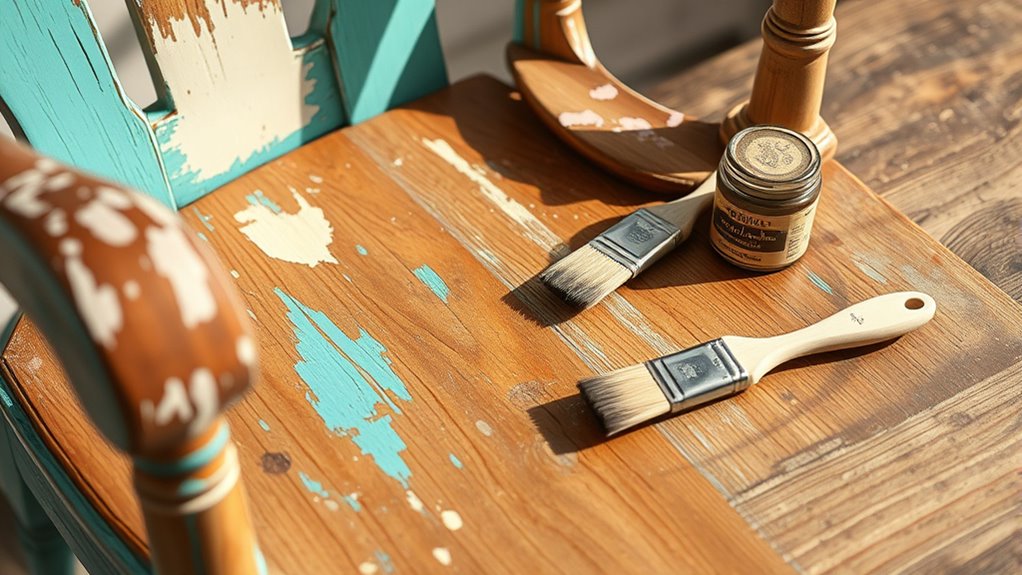To turn old furniture into treasured memory pieces, start by carefully evaluating its structure, joints, and hardware for damage. Plan your project, gather quality supplies like paint, sanders, and fabric, and choose techniques that suit your style, such as distressing or reupholstering. Personalize with decorative accents and seal for durability. Regular care keeps your memories alive. Continue exploring ways to creatively transform your cherished pieces into meaningful keepsakes that tell your story.
Key Takeaways
- Inspect furniture for structural damage and plan necessary repairs or updates before starting the refurbishment.
- Select high-quality paints, finishes, and hardware to enhance durability and achieve your desired aesthetic.
- Use sanding techniques and protective topcoats to restore surfaces and prepare them for personalization.
- Incorporate decorative touches like vintage paint, distressing, or new hardware to add character and uniqueness.
- Maintain and care for the finished piece regularly by cleaning, re-tightening hardware, and applying protective finishes.
Assessing and Planning Your Refurbishment Project
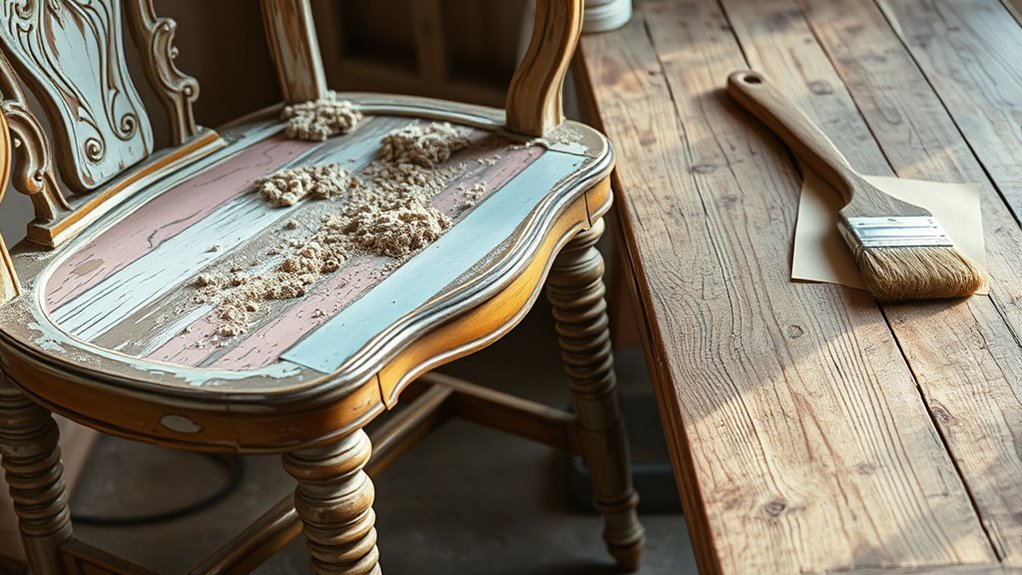
Before you begin refurbishing old furniture, it’s essential to assess its condition and plan your project carefully. Start by examining the piece’s structure, joints, and frame to identify any damage or weakness. Consider whether upholstery techniques like reupholstering or padding are needed, and decide if hardware replacement is necessary to restore functionality or style. You’ll want to check if existing hardware is rusted, broken, or outdated, making it easier to choose suitable replacements later. Planning ahead helps you determine the scope of work, budget, and tools required. Taking time at this stage prevents surprises down the line and ensures your refurbishment process goes smoothly. Clear assessment and strategic planning are key to transforming your old furniture into a beautiful, functional piece. Additionally, understanding the importance of attention in creative practice can help you stay focused and meticulous during each step of your refurbishment.
Selecting the Right Materials and Tools
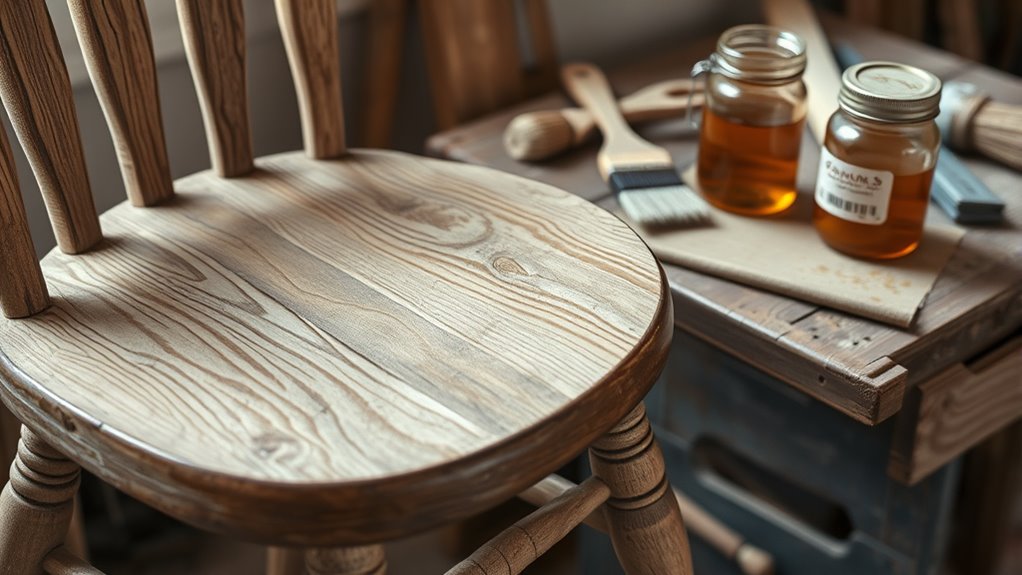
Choosing the right materials and tools is essential for a successful furniture refurbishment, as they directly impact the quality and durability of your finished piece. Start with careful paint selection; opt for high-quality paints suited to your furniture’s material and the look you want. Consider finishes like matte, satin, or gloss based on your desired effect. When it comes to sanding, use appropriate techniques to prepare the surface—start with coarse grit to remove old paint or rough spots, then progress to finer grits for smoothness. Invest in good sanding tools, such as handheld sanders or sanding blocks, to achieve even results. Using the correct materials and mastering proper sanding techniques will ensure your refurbishing project looks professional and lasts over time. Additionally, understanding market volatility can help you choose durable materials that stand the test of time.
Techniques for Restoring and Personalizing Old Furniture
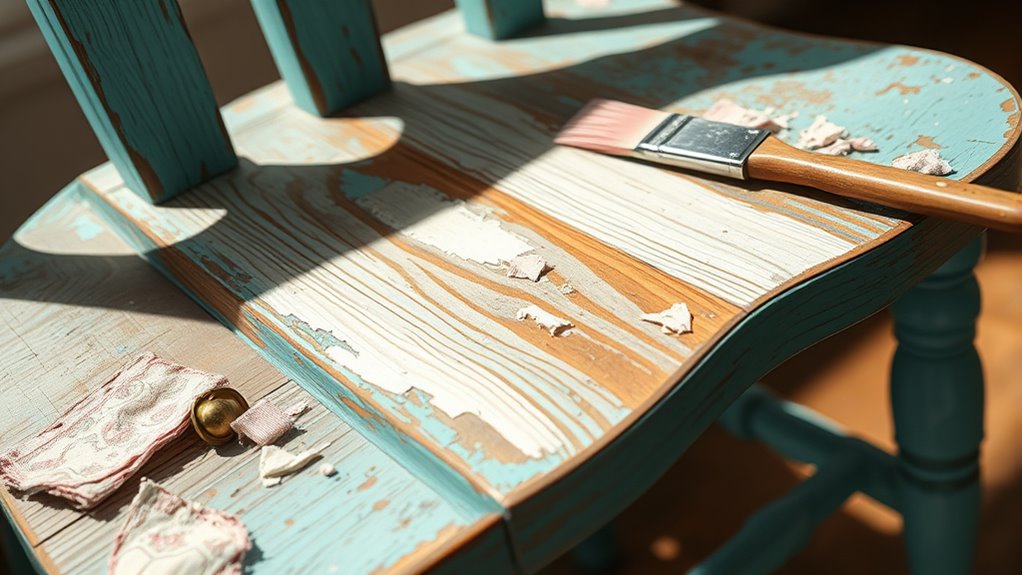
To effectively restore and personalize old furniture, you need to employ a combination of techniques that breathe new life into worn surfaces and reflect your unique style. Start with applying vintage finishes, such as distressed paint or wax, to give the piece an authentic, aged look. These finishes highlight the furniture’s history and add character. For upholstery, use techniques like reupholstering with fresh fabric or re-stuffing cushions to enhance comfort and appearance. Carefully sand surfaces to remove scratches and old paint, then seal with a protective topcoat. Personalization can also include adding new hardware or decorative accents. Incorporating AI tools can assist in designing custom patterns or selecting complementary color schemes. Combining vintage finishes with thoughtful upholstery techniques allows you to transform your furniture into a cherished memory piece that’s both functional and visually compelling.
Adding Artistic Touches and Decorative Details
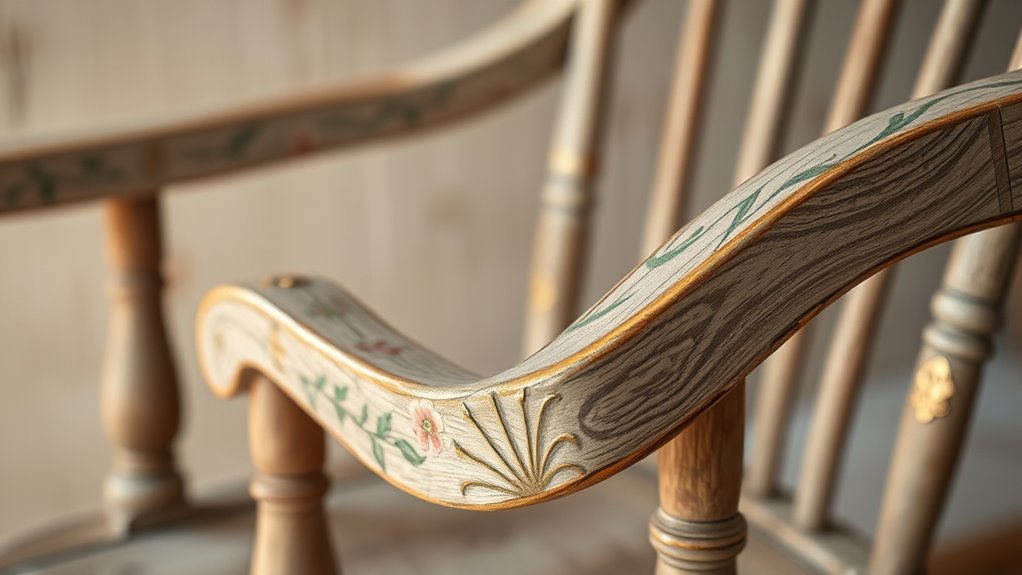
Adding artistic touches and decorative details can instantly elevate your furniture’s appearance, making it truly unique. Using vintage paint adds a charming, aged look that highlights character and history. Consider applying a distressed finish or soft pastel shades to give the piece a nostalgic feel. Decorative hardware, like ornate knobs or vintage pulls, can further enhance its visual appeal. Swapping out standard handles for more intricate or colorful options instantly updates the furniture’s style. You might also add stenciled designs, hand-painted accents, or inlays for a personalized touch. These details not only reflect your personality but also transform a simple piece into a treasured memory. Additionally, understanding the offensive security measures involved can inspire more creative and authentic decorative choices. Keep your approach balanced—too many embellishments can overwhelm, so choose details that complement the overall aesthetic.
Caring for and Maintaining Your Memory Pieces
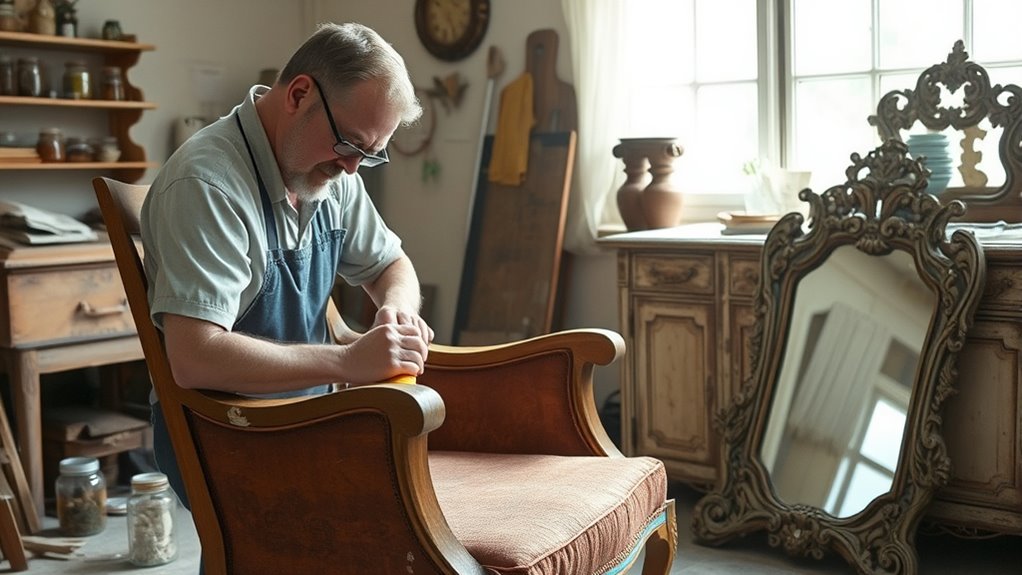
Once you’ve given your furniture a personalized touch with decorative details, maintaining its beauty becomes important to preserve those memories. Regular upkeep involves using proper upholstery techniques to keep cushions and fabric looking fresh. Vacuum or gently brush the upholstery to remove dust and dirt, and consider professional cleaning for stubborn stains. Keep an eye on hardware, and replace any worn or loose pieces promptly to ensure stability and safety. Applying a protective finish or polish can also help preserve the wood’s luster. Avoid harsh chemicals that might damage the delicate surfaces. By staying attentive to these details, you’ll extend the life of your memory pieces, ensuring they continue to tell your story for years to come.
Frequently Asked Questions
How Can I Estimate the Total Cost of My Refurbishment Project?
To estimate the total cost of your project, start with cost calculation by listing all materials, tools, and supplies you’ll need. Don’t forget to include labor costs if you’re hiring help. Use this list for budget planning, setting aside extra funds for unexpected expenses. Track prices online or at stores to refine your estimate. This way, you guarantee your project stays within budget and avoid surprises.
What Are Common Mistakes to Avoid During Furniture Restoration?
You’re risking a restoration disaster if you ignore common mistakes! Avoid rushing paint selection—choose the right color and finish for a flawless look. Don’t overlook hardware replacement; outdated or broken handles ruin the entire piece. Skipping proper prep work can lead to peeling or uneven paint. Take your time, research, and plan carefully, or your furniture project might become a costly, heartbreaking mistake that ruins your hard work.
How Long Does a Typical Furniture Refurbishment Take?
When wondering how long a furniture refurbishment takes, keep in mind that the refurbishment timeline varies depending on the project’s complexity. You should plan your project scheduling carefully, allowing extra time for unexpected issues. Simple refinishing might take a few days, while extensive restorations could span weeks. By setting realistic expectations and breaking the work into stages, you ensure a smooth process and a satisfying finished piece.
Are There Eco-Friendly Options for Refurbishing Old Furniture?
Imagine breathing new life into a forgotten treasure. Yes, eco-friendly options exist for refurbishing old furniture. You can choose reclaimed wood, giving new purpose to recycled materials, or opt for natural finishes like beeswax or plant-based oils that cherish the environment. These choices create a harmonious blend of beauty and sustainability, transforming your piece into a green masterpiece that tells a story of care for the Earth and your memories.
How Can I Ensure My Personalized Touches Won’T Damage the Piece?
To guarantee your personalized finishes don’t damage the piece, always start with a test area to see how it reacts. Use protective coatings like clear sealants or varnishes to safeguard your work. Be gentle with application, avoiding excessive layers that could cause damage. You should also follow manufacturer instructions carefully, and consider eco-friendly options to protect both your furniture and the environment. This way, your unique touches stay beautiful and safe.
Conclusion
As you breathe new life into your furniture, remember that each piece becomes a treasured memory, much like a vintage vinyl recording. With careful planning, the right tools, and personal touches, your refurbished furniture will stand the test of time. Embrace the process as a creative journey—think of it as your own Renaissance. Keep caring for your memory pieces, and they’ll continue to tell stories long after the last brushstroke.
